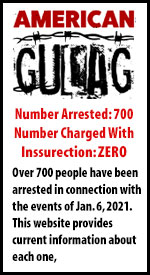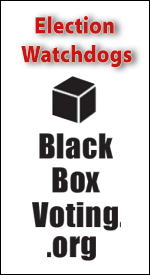Tracking The Presumed Payment of Value for the Underlying Debt

by Neil Garfield
Livinglies.me
Paper checks have become a thing of the past. We have been too quick to assume they are not necessary — like paper ballots. But without corroborating evidence, the presumption arising from a document that recites “for value received” those presumptions can be busted wide open. But that only happens if you challenge it in a timely and proper manner.
Hat tip to Summer ChIc. She found the following description of the places that would have a record of a wire transfer. When you ask for a canceled check or evidence of the wire transfer the foreclosure mill will burst into flames. And you must understand that the reason is that there is no wire transfer in many situations and further if there is one, it didn’t come from the “lender” or “assignee” or anyone else who appears in the chain of title.
None of this makes sense to anyone who insists on viewing the status of the transaction as a loan. But it makes perfect sense to anyone who views the transaction as either completely fictional or simply an incentive payment to get the homeowners to execute the only documents that give rise to the sale of securities. The investment banks were not interested in loans. They were strictly interested in selling securities.
When you look at it the second way then you realize that there wouldn’t be any further “payments of value” because it was already paid. And the legal significance of that is this: endorsements of notes can be valid without consideration but assignments of a mortgage without transferring the debt by payment of value for the underlying obligation cannot be valid nor enforceable. Such assignments are, in all U.S. jurisdictions a legal nullity.
The endorsement of the note is often taken to be evidence of the transfer of the underlying debt. But that presumption is rebutted under existing law (for centuries) if there was no payment of value for the underlying obligation. That payment is presumed by apparent transfer of the right to enforce the note by transfer of possession of the original note and a grant of authority to enforce it. But that grant must come ultimately from the owner of the underlying debt.
So in discovery, it is important to test the sufficiency of each document that recites “for value received” or “for value paid.” In most cases, no such transaction occurred and that is exactly why you should test it in your discovery demands. If no such value was paid, either assignment of mortgage was a legal nullity or the note cannot be enforced.
While legal presumptions make it easy to file a claim for enforcement of the note, and without challenges from the maker it is then easy to get a judgment, that is turned on its head when there is no transaction and the maker reveals the lack of corroborating evidence for the presumptions, which are then rebutted or not applied. The foreclosure mill has nothing left under such circumstances. And that is one of the places in time — at the end of litigation — where confidential settlements occur that include scrubbing court files of any evidence of the case.
Practice hint: don’t ask for “proof of payment.” The word “proof” is a term subject to interpretation. The opposition could supply you with the same documents that they are relying on for the claim. A motion to compel based upon such request must be denied. A motion for sanctions would then become impossible.
You should ask for copies of any documents, agreements or correspondence that corroborate the recital of payment given or received. Documents would include evidence of write transfers. And that is where Summer Chic’s contribution is so important. This is taken from the Federal Reserve website.
The Wire Process
Most domestic wires are completed within 2-4 business hours from ordering.
Sending Bank
- Reviews Wire
- Runs through OFAC (Office of Foreign Assets Control)
- Sends to Federal Reserve
- Receives a FED ID (also known as OMAD or IMAD #)
Federal Reserve
- Reviews Wire
- Sends to Receiving Bank
Receiving Bank
- Reviews incoming wire
- Runs through OFAC
- Deposits funds in the title company account
What Your Clients Need to Know
- All banks have different requirements and your client needs to have a conversation with their bank early in the transaction process:
- Are there any fees involved to wire funds? Most banks will have fees for both outgoing and incoming wires.
- Verify how many days prior to the closing the wire should be ordered for funds to arrive in time.
- Can wires be ordered on the bank’s website or does the account holder need to be present in a branch to order?
- International wires typically involve an intermediary bank and additional time.
- Educate your clients about wire fraud and how to prevent it (see below).
- Wire instructions must be confirmed by calling the closing office using a known number such as the contact information on the title commitment.
- When ordering the wire, be sure to reference the Title Company’s file number, closer name and property address (found on the wire instructions form).
- After a wire is initiated at the sending bank, the buyer needs to notify your closing team via phone that the wire was sent.
What Could Slow Down a Wire
- Extra approvals may be needed at each institution if funds are over $1 Million
- If the review by the Office of Foreign Assets Control (OFAC) raises a red flag e.g. a common name on the wire that matches a name on a government list. The bank may need additional info from the individual such as date of birth, location of birth etc.
- Incorrect information (e.g. missing or incomplete bank information, file #, closer name, property address).
How to Track a Wire
Occasionally a wire needs to be tracked. In order to locate a wire a FED ID number is needed. The client will need to contact their sending bank to obtain the FED ID number.It will always start with the date, followed by letters then numbers. E.g. 20190912QMGFT0000000000. Give the FED ID number to the title company (via phone) to aid in tracking the progress of the wire.
Wire Fraud Prevention
From day one, inform your client on how you will be communicating with them throughout the real estate transaction and how any other parties involved in the
transaction (i.e. title company) will be contacting them. Let them know you will never ask them to send sensitive information via email.
- Do not open suspicious emails, click on any links or open attachments.
- Be wary of emails purporting to send new wire instructions or demanding funds several days or even weeks before closing.
- Make sure to change your usernames and passwords frequently and never use passwords that are easy to guess like password or 123456.
- Do not save wiring instructions on your desktop and send to the client. Land Title always sends the instructions via a secured email.
- Always double-check and verify the phone number contained in the email for the intended recipient of the wire.
- If in doubt call the title company directly using a known number, such as the number on the title commitment.





















